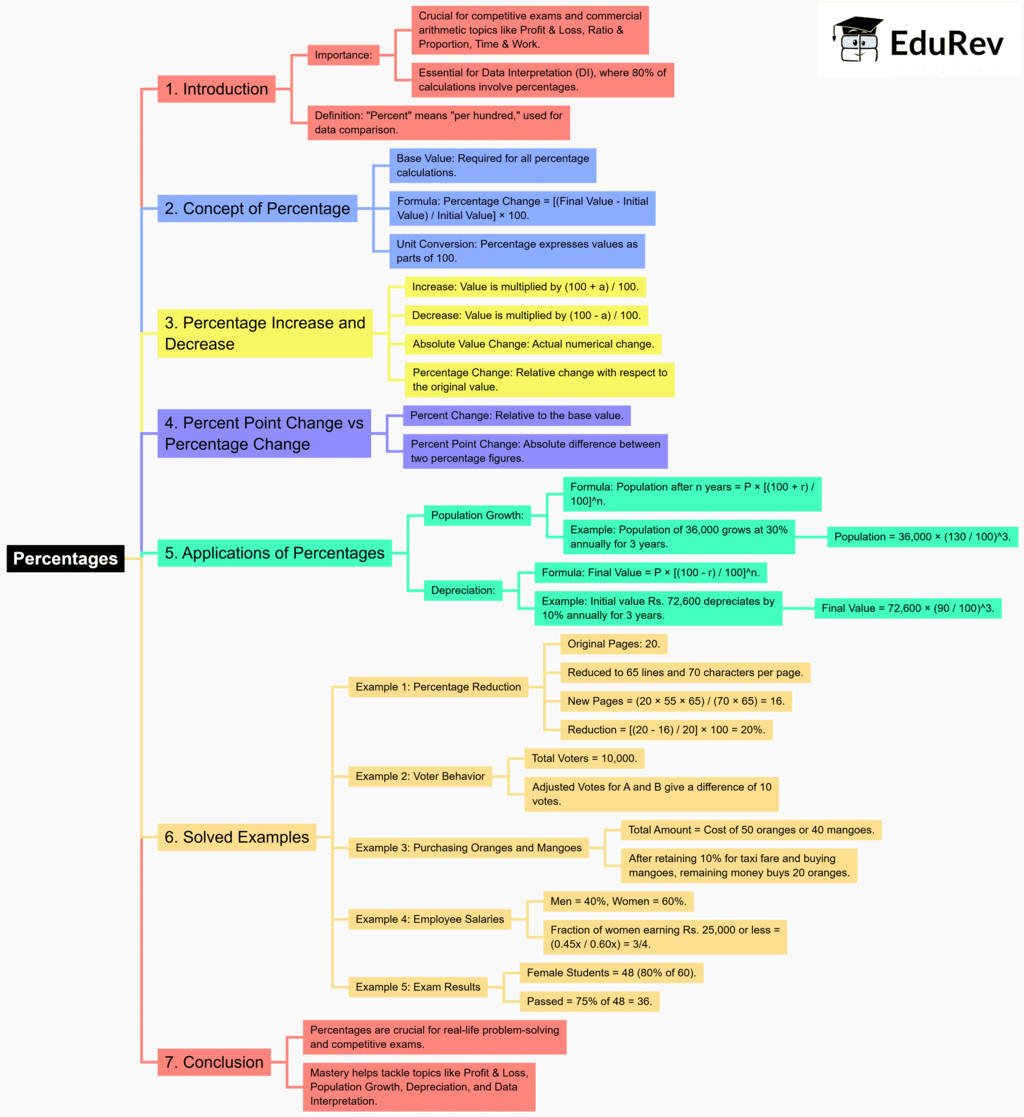Bank Exams Exam > Bank Exams Notes > IBPS PO Prelims & Mains Preparation > Mind Map: Percentages
Mind Map: Percentages | IBPS PO Prelims & Mains Preparation - Bank Exams PDF Download

The document Mind Map: Percentages | IBPS PO Prelims & Mains Preparation - Bank Exams is a part of the Bank Exams Course IBPS PO Prelims & Mains Preparation.
All you need of Bank Exams at this link: Bank Exams
|
670 videos|1101 docs|322 tests
|
FAQs on Mind Map: Percentages - IBPS PO Prelims & Mains Preparation - Bank Exams
| 1. What is a percentage and how is it calculated? |  |
Ans.A percentage is a way of expressing a number as a fraction of 100. It is calculated by taking the part you want to express as a percentage, dividing it by the total, and then multiplying by 100. For example, if you have 20 out of 50, you would calculate it as (20/50) x 100 = 40%.
| 2. How do you convert a fraction to a percentage? |  |
Ans.To convert a fraction to a percentage, you divide the numerator (top number) by the denominator (bottom number) and then multiply the result by 100. For instance, to convert 3/4 to a percentage, you would calculate (3 ÷ 4) x 100 = 75%.
| 3. What is the difference between a percentage and a decimal? |  |
Ans.A percentage is a way of expressing a number as a part of 100, while a decimal is a fraction expressed in a base 10 format. To convert a percentage to a decimal, you divide by 100. For example, 25% as a decimal is 25 ÷ 100 = 0.25.
| 4. How do you find the percentage increase or decrease? |  |
Ans.To find the percentage increase or decrease, you first subtract the original value from the new value to find the difference. Then, divide that difference by the original value and multiply by 100. For example, if the original price was $50 and the new price is $70, the percentage increase would be ((70 - 50) / 50) x 100 = 40%.
| 5. What are some common real-life applications of percentages? |  |
Ans.Percentages are commonly used in various real-life situations such as calculating discounts during sales, determining interest rates on loans, understanding statistics in surveys, and evaluating profits or losses in business. For example, if a product costs $100 and is on a 20% discount, the sale price would be calculated as 100 - (20/100 x 100) = $80.
Related Searches
















